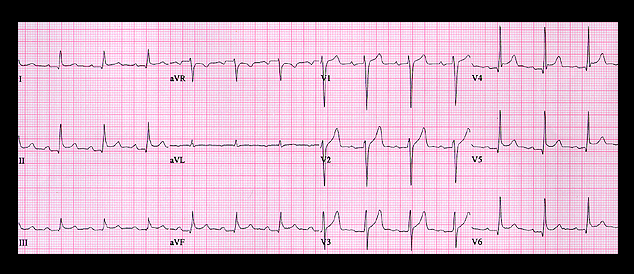
The ECG shows elevation of the ST segment in all leads except aVR. where it is depressed ,and aVL, where it is flat. Note also that in leads II and III, the PR segment is depressed relative to the TP segment. These ECG changes are highly suggestive of acute pericarditis and the physical examination revealed a pericardial friction rub, the result of uremic pericarditis.
